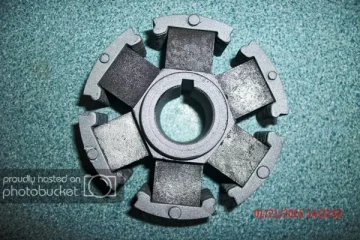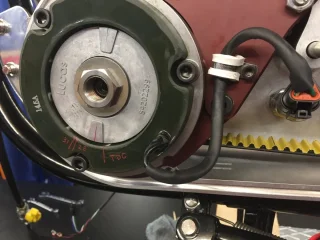Fast Eddie
VIP MEMBER
- Joined
- Oct 4, 2013
- Messages
- 21,594
I’m partially stripping the Trident Hunter at present.
I noted when removing the alternator stator (new ‘Lucas’ replacement fitted 2013) that it had been rubbing mildly on the stator.
When I fitted this I went to quite some trouble, using plastic bottle ‘shims’ and checking with a .010” feeler gauge.
So, I’m thinking that the contact may be due to crank flex at high rpm? I’m also thinking that more clearance would help.
I recall Stan Shelton (Triumph Tuning) saying “the rotor can be turned down .010” thus creating a .020” air gap resulting in less oil drag and less chance of metal particles getting jammed”.
My primary is dry, so oil drag isn’t a concern, but this raises the question, how much can the gap be opened up by without detrimental effect on the alternator.
I’ll at least do as Stan says and take .010” off, I’ve done that before, but can I take more? Does anyone know?
I noted when removing the alternator stator (new ‘Lucas’ replacement fitted 2013) that it had been rubbing mildly on the stator.
When I fitted this I went to quite some trouble, using plastic bottle ‘shims’ and checking with a .010” feeler gauge.
So, I’m thinking that the contact may be due to crank flex at high rpm? I’m also thinking that more clearance would help.
I recall Stan Shelton (Triumph Tuning) saying “the rotor can be turned down .010” thus creating a .020” air gap resulting in less oil drag and less chance of metal particles getting jammed”.
My primary is dry, so oil drag isn’t a concern, but this raises the question, how much can the gap be opened up by without detrimental effect on the alternator.
I’ll at least do as Stan says and take .010” off, I’ve done that before, but can I take more? Does anyone know?


